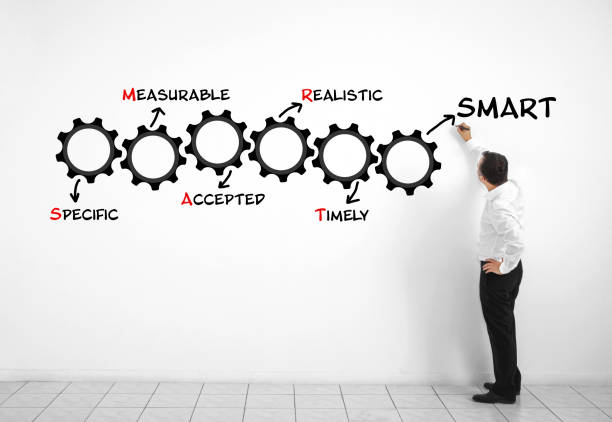1. Introduction
Communication is a complex process that involves not only the exchange of words but also the interpretation of nonverbal cues. Nonverbal cues, such as facial expressions, gestures, and body language, play a crucial role in conveying emotions, attitudes, and intentions in social interactions. Understanding how the brain processes and interprets these nonverbal cues is essential for comprehending the full meaning behind verbal communication and enhancing our overall understanding of language.
Thank you for reading this post, don't forget to subscribe!Facial expressions are one of the most powerful nonverbal cues that humans use to convey emotions and attitudes. The human brain has a specialized region known as the fusiform face area (FFA), located in the ventral stream of the visual cortex, which is responsible for processing and recognizing facial expressions. The FFA activates when we see faces, allowing us to quickly and effortlessly identify different emotions, such as happiness, sadness, anger, fear, and surprise.

Additionally, the brain’s mirror neuron system (MNS) plays a crucial role in understanding the intentions and actions of others through observation. The MNS, found in the premotor cortex and parietal cortex, activates both when we perform an action and when we observe someone else performing the same action. This mirroring process helps us understand and interpret gestures and body language. For example, when we see someone raise their hand, our mirror neurons simulate the same action, allowing us to understand that the person is signaling or asking for attention.
2. Examples of how the brain processes and interprets nonverbal cues in daily communication
A. Facial Expressions
- When someone raises their eyebrows and widens their eyes while listening to you, your brain recognizes their expression as one of surprise or curiosity, indicating their interest in what you’re saying.
- A person’s frown and downturned lips can convey sadness or disapproval, allowing your brain to understand their emotional state and adjust your response accordingly.

B. Gestures and Body Language
- If someone crosses their arms and leans back slightly during a conversation, your brain interprets this as a defensive or closed-off posture, indicating their lack of receptiveness or disagreement with the topic being discussed.
- When someone nods their head and maintains eye contact while you speak, your brain recognizes these positive gestures as signs of agreement or attentiveness, encouraging you to continue expressing your thoughts.
Read Also: Blind People Remember Language Better Than Sighted People: A Study Reveals
How to Read Nonverbal Communication Cues: 5 Techniques
C. Eye Contact
- Direct eye contact during a conversation signals engagement and attentiveness. When someone maintains eye contact while you speak, your brain recognizes their interest and involvement in the discussion.
- Conversely, avoiding eye contact or frequently looking away may indicate discomfort, lack of confidence, or disinterest, which your brain picks up on and adjusts your perception of their engagement accordingly.
D. Tone of Voice
- The tone of voice plays a significant role in communication. When someone speaks in a soft, gentle tone, your brain perceives it as a sign of kindness or empathy, affecting how you interpret their message.
- On the other hand, if someone raises their voice and uses harsh or aggressive intonation, your brain recognizes it as an indication of anger or frustration, shaping your understanding of their emotions and the urgency of their message.
E. Posture and Movement
- A person standing upright with open and relaxed body language conveys confidence and approachability. Your brain interprets these cues positively and may lead you to feel more comfortable engaging in conversation.
- Conversely, slouched shoulders, crossed arms, or restless movements can indicate discomfort or defensiveness, which your brain registers, affecting your perception of their mood and receptiveness.
3. Complex situations where the brain can interpret nonverbal cues
A. Deception
- During a job interview, the interviewer’s nonverbal cues, such as subtle facial expressions, shifts in body language, or changes in vocal tone, can indicate whether they believe the candidate’s responses or suspect deception.
- Law enforcement officers are trained to observe nonverbal cues during interrogations to assess the truthfulness of a suspect’s statements.
B. Cultural Differences:
- When interacting with individuals from different cultures, understanding nonverbal cues becomes crucial. For example, in some cultures, maintaining prolonged eye contact may be considered disrespectful, while in others, it demonstrates attentiveness.
- Interpreting nonverbal cues in cross-cultural settings helps navigate social norms and avoid misunderstandings.

Read also: Language and culture: Languages can really reflect and promote cultural awareness
C. Negotiations
- Nonverbal cues play a significant role in negotiations, where individuals attempt to understand each other’s positions and motivations. Observing subtle changes in facial expressions, body language, or hand gestures can provide insights into the other party’s level of interest, agreement, or resistance.
- Detecting nonverbal cues during negotiations can help skilled negotiators adjust their strategies and find mutually beneficial outcomes.
E. Emotional Support
When consoling a friend who is going through a difficult time, understanding nonverbal cues can help provide appropriate emotional support. Interpreting facial expressions, body language, and touch can indicate the level of comfort or distress the person is experiencing, guiding the appropriate response and empathy.
D. Public Speaking
- Nonverbal cues are crucial in public speaking engagements. The speaker’s gestures, posture, and facial expressions contribute to conveying confidence, enthusiasm, and connection with the audience.
- Similarly, the audience’s nonverbal cues, such as nodding, maintaining eye contact, or leaning forward, provide feedback to the speaker and help gauge the effectiveness of the message.
In these complex situations, the brain’s ability to process and interpret nonverbal cues allows individuals to navigate social dynamics, build rapport, and make informed judgments. It showcases the importance of nonverbal communication alongside verbal language, enabling a deeper understanding of others and enhancing effective communication across various contexts.
The interpretation of nonverbal cues is not limited to specialized regions of the brain. It involves the integration of multiple brain areas, including the prefrontal cortex, amygdala, and anterior cingulate cortex, among others. These regions work together to analyze and process nonverbal cues in conjunction with verbal information, providing a comprehensive understanding of communication. These are the the brain areas and how they function
Prefrontal Cortex:
- The prefrontal cortex, including the orbitofrontal cortex and ventromedial prefrontal cortex, evaluates and assigns meaning to nonverbal cues.
- It helps us differentiate between a genuine smile and a forced one, or understand the subtle nuances of a person’s body language.
- For example, the prefrontal cortex helps us recognize a raised eyebrow as a sign of skepticism or doubt.
Amygdala:
- The amygdala, located deep within the brain, processes emotions and assigns emotional significance to nonverbal cues.
- When we see a fearful facial expression, the amygdala activates and triggers a fear response, helping us understand and respond to potential threats.

Anterior Cingulate Cortex (ACC):
- The ACC monitors social interactions and integrates nonverbal cues with verbal information.
- It helps us assess the intentions and emotional states of others.
- For instance, the ACC allows us to understand and empathize with someone’s sadness by interpreting their slumped shoulders and downcast eyes.
Integration of Nonverbal Cues:
- Multiple brain areas, including the prefrontal cortex, amygdala, and ACC, work together to analyze and process nonverbal cues in conjunction with verbal information.
- This integration provides a comprehensive understanding of communication, allowing us to interpret the full meaning behind a person’s words.
Facial Expressions:
- The fusiform face area (FFA) in the brain activates when we see faces, allowing us to recognize different emotions like happiness, sadness, anger, fear, and surprise.
- For example, when we see a smile, the brain’s FFA helps us interpret it as a sign of happiness or friendliness.
Gestures and Body Language:
- The mirror neuron system (MNS) activates when we observe someone else performing an action, helping us understand and interpret gestures and body language.
- When we see someone raise their hand, the MNS simulates the action, allowing us to understand that the person is signaling or asking for attention.
Understanding how the brain processes and interprets these nonverbal cues enhances our ability to communicate effectively, empathize with others, and build stronger interpersonal connections.







